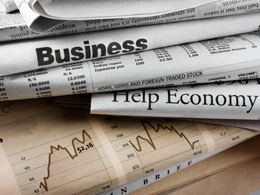 Today, I want to discuss two timely topics that are more interrelated than they seem. One is the growing trend of tax inversions, whereby U.S. companies change their legal structure to avoid or reduce their tax exposure. The other is the launch of a new development bank capitalized by the BRICS countries (Brazil, Russia, India, China, and South Africa)—a rival to the traditional international financial institutions, such as the World Bank and the IMF.
Today, I want to discuss two timely topics that are more interrelated than they seem. One is the growing trend of tax inversions, whereby U.S. companies change their legal structure to avoid or reduce their tax exposure. The other is the launch of a new development bank capitalized by the BRICS countries (Brazil, Russia, India, China, and South Africa)—a rival to the traditional international financial institutions, such as the World Bank and the IMF.
What’s the common denominator here? Both developments suggest we need to rethink some long-held assumptions about how the world works.
Corporate tax inversion no longer taboo
In the past, reincorporating overseas for tax purposes wasn’t even a question for American companies. We’ve always had individual tax exiles, but the perceived reputational costs were too high for businesses to use the tactic.
Recently, though, several high-profile companies have made deals that allow them to domicile in—and be taxed by—foreign jurisdictions, with lower tax rates. This has become enough of an issue that the Treasury Secretary has called on Congress to pass laws prohibiting such transactions.
Through financial engineering, companies can cut their tax bills (and U.S. government revenue) without actually changing much in the way of locations, staffing, or anything else. The only thing that has prevented this maneuver to date is a consensus that it just wasn’t done.
That consensus is now gone. The national perspective has changed to a global one, not just for manufacturing, but for taxes as well. The U.S. is now competing against every other government in the world for desperately needed tax revenue.
BRICS development bank shakes things up
Up to now, the Western financial institutions have been the only recourse for countries in trouble, or simply in need of capital. As much as the IMF, for example, was denounced and hated, it was the only game in town. You wanted the money, you had to do what they said—no matter what it did to your economy or your population. Even now, with the rise of China and others, the major Western countries still control these institutions, exacting economic and political change with their money.
The BRICS development bank will change all that. Simply by offering an alternative, it strips the IMF of a great deal of its negotiating power.
With its lead role in the new bank, China will be able to continue its noninterference policies to obtain a preferential lending position with many countries—and enhance its political influence in countries where the West is now dominant. Imagine, for example, the new bank lending to Argentina, and Argentina telling its existing creditors to go pound sand.
Should the new bank succeed, a major economic tool will be largely removed from the hands of the West.
Time to revisit our assumptions
While I maintain that the role of the dollar as a reserve currency is secure for the next decade, at least, there’s no doubt that the role of the U.S. (and the West) as the dominant player in the world economy is shrinking.
For investors, relying on past assumptions, and past statistics, will become increasingly risky. Using post-World War II price/earnings ratios for the U.S. market, for example, assumes that a U.S.-dominated world will continue. Increasingly, the relevant periods of comparison will be multipolar worlds—such as pre-1914 Europe or Asia—for which we have no solid economic data.
Instead of taking it as a given that the world of today is essentially the same as the past, we must constantly review and validate our views. The world is changing now and will change even faster in the future.


 Print
Print


